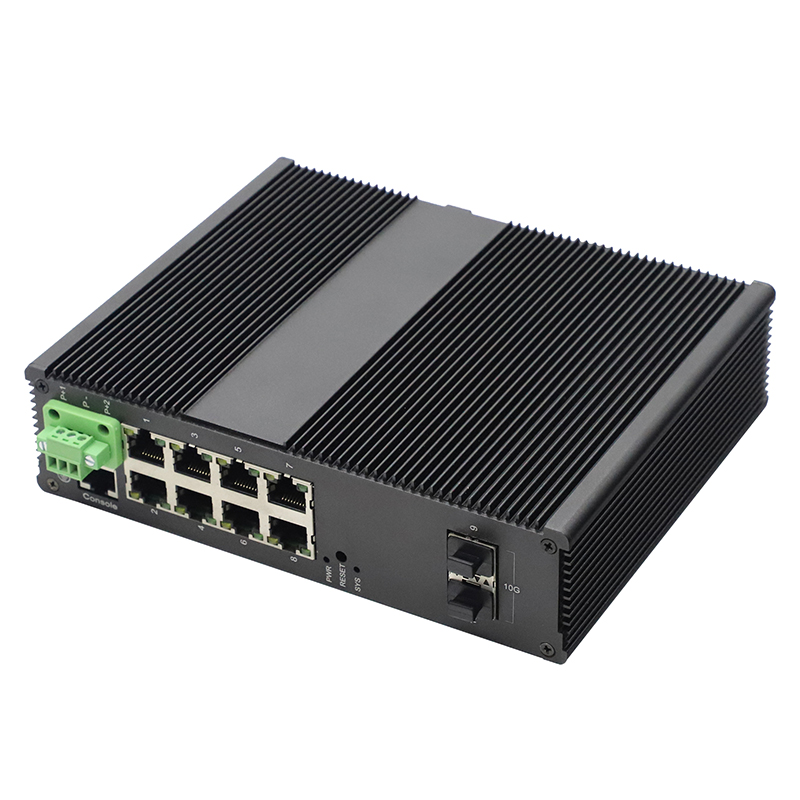About the power supply distance of POE switches
The PoE power supply distance is determined by the data signal and transmission distance, and the transmission distance of the data signal is determined by the network cable.
1. Network cable requirements The lower the impedance of the network cable, the longer the transmission distance, so first of all, the quality of the network cable must be guaranteed, and the quality of the network cable must be purchased. It is recommended to use a super-category 5 network cable. The transmission distance of ordinary category 5 cable data signals is about 100 meters.
Since there are two PoE standards: IEEE802.af and IEEE802.3at standards, they have different requirements for Cat5e network cables, and the difference is mainly reflected in the equivalent impedance. For example, for a 100-meter Category 5e network cable, the equivalent impedance of IEEE802.3at must be less than 12.5 ohms, and that of IEEE802.3af must be less than 20 ohms. It can be seen that the smaller the equivalent impedance is, the farther the transmission distance is.
2. PoE standard
To ensure the transmission distance of the PoE switch, it depends on the output voltage of the PoE power supply. It should be as high as possible within the standard (44-57VDC). The output voltage of the PoE switch port must comply with the IEEE802.3af/at standard.
Hidden dangers of non-standard POE switches
Non-standard PoE power supply is relative to standard PoE power supply. It does not have a PoE control chip inside, and there is no detection step. It will supply power to the IP terminal regardless of whether it supports PoE. If the IP terminal does not have PoE power supply, it is very likely Burn down the network port.
1. Choose less “non-standard” PoE
When choosing a PoE switch, try to choose a standard one, which has the following advantages:
The power supply end (PSE) and the power receiving end (PD) can dynamically sense and adjust the supply voltage.
Effectively protect the receiving end (usually IPC) from being burned by electric shock (other aspects include short circuit, surge protection, etc.).
It can intelligently detect whether the terminal supports PoE, and will not supply power when connecting to a non-PoE terminal.
Non-standard PoE switches usually do not have the above security measures in order to save costs, so there are certain security risks. However, it does not mean that non-standard PoE cannot be used. When the voltage of non-standard PoE matches the voltage of the powered device, it can also be used and can reduce costs.
2. Don’t use “fake” PoE. Fake PoE devices only combine DC power into the network cable through a PoE combiner. They cannot be powered by a standard PoE switch, otherwise the device will burn out, so do not use fake PoE devices. In engineering applications, it is not only necessary to choose standard PoE switches, but also standard PoE terminals.
About the cascading problem of the switch
The number of layers of cascaded switches involves the calculation of bandwidth, a simple example:
If a switch with a 100Mbps network port is cascaded to the center, the effective bandwidth is 45Mbps (bandwidth utilization ≈ 45%). If each switch is connected to a monitoring device with a total bit rate of 15M, which accounts for 15M of the bandwidth of a single switch, then 45/15≈3, 3 switches can be cascaded.
Why is the bandwidth utilization approximately equal to 45%? The actual Ethernet IP packet header accounts for about 25% of the total traffic, the actual available link bandwidth is 75%, and the reserved bandwidth is considered to be 30% in practical applications, so the bandwidth utilization rate is estimated to be 45%.
About switch port identification
1. Access and uplink ports
Switch ports are divided into access and uplink ports to better differentiate services and simplify maintenance, thereby specifying different port roles.
Access port: As the name implies, it is the interface directly connected to the terminal (IPC, wireless AP, PC, etc.)
Uplink port: The port connected to the aggregation or core network, usually with a higher interface rate, does not support the PoE function.
Post time: Dec-20-2022






